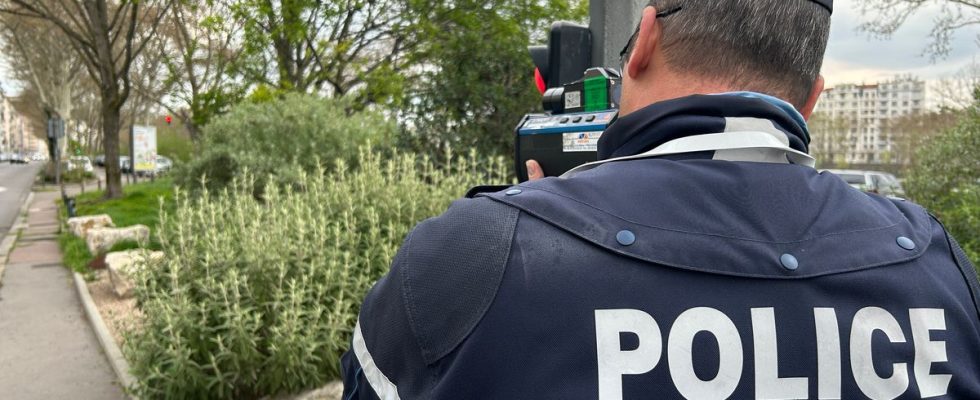Stéphane placed himself at the start of the Herbouville course in Lyon. Armed with binoculars, he will control the speed of motorists driving on this axis limited to 30 km / h for a year, like 84% of the city. “It’s a road lined with houses, with a bus lane which is also used by bicycles and scooters, he examines. The limitation is completely justified, it has a positive effect on the safety of all road users. »
With his team of bikers, he carries out on average “four to five control operations per day” on “several points”. “Depending on the time slots and the places, we draw up more or less verbalizations”, he notes. The most impressive speeding offenses are generally on “main axes like the quays” at times when “there are fewer people”. “You don’t stop someone for 32 km/h. But again yesterday, we arrested a person who was driving at 114 km / h, instead of 30 km / h! At 12:15 p.m.! he exclaims. In this case, permit retention is automatic.
The “city 30” for “the general interest”
According to this officer who has been in the municipal police for seventeen years, the offenses are more likely to be committed by “people who do not live in the agglomeration”. “But from the moment when, on the entrance panel of the city, it is indicated 30 km / h, that means that it extends to almost all the lanes”, he points out. He adds: “By being on the pitch every day, I find that, overall, the Lyonnais have reduced their speed”. Within thirty minutes, five people had been arrested that day.
Including Véronique, controlled at 61 km / h. “The policeman is right, it’s marked everywhere,” she concedes, justifying “being late”. “I didn’t know,” she says afterwards. I live in Caluire, I rarely go to town. Usually, I’m careful. Especially since there are bicycles and scooters everywhere, we have to be careful. “As” most of the time “, according to the police officer, this motorist recognizes his fault.
But to those who complain, Valentin Lungenstrass, deputy mayor, delegate for mobility, pleads “the general interest”. “You have to think collectively,” he continues. This measure has been put in place to live in a more secure space and only works with the efforts that everyone can make”. He recalls: “When a car hits a pedestrian, he has an 80% chance of dying. At 30 km/h, this risk is drastically reduced to 10%. »
The city of Lyon on the right track
To ensure this good conduct, the municipality has drastically increased the controls carried out. “We were at 40 operations in February 2022, we are at 350 for this year,” says Mohamed Chihi, security assistant. He understands that it is difficult to make correlation links between the number of fines (554 in one year) and compliance with the regulations since the checks are more frequent.
But the city’s goal is on track. According to its figures, accident rates fell by 22% between 2019 and 2022. The number of hospitalized injuries also fell, by 40%.
Same assessment on the side of the metropolis of Lyon which is also committed to the “city 30” system. Today, eighteen municipalities, out of fifty-nine, apply this regulation, which then concerns 45% of the population. The objective is to reach two-thirds by the end of the mandate, declared the vice-president for roads and mobility, Fabien Bagnon. “It’s a unifying subject,” he says.
Objective “zero fatalities and zero serious injuries”
The two communities are going further in their commitment and aiming for “zero deaths and serious injuries”. Beyond zone 30, the measures taken to fulfill this “long-term objective” concern the development of roads with “more secure cycle paths”, the creation of a “pedestrian zone” as in the Presqu’île, in more “security around schools”, quotes the mayor of Lyon, Grégory Doucet.
Elected officials are now calling on the State to deploy speed cameras in urban areas in order to “enforce the system as well as possible”.

